Decor
What Is the Lucky Amount to Put in a Red Envelope?
2025

Have you ever pondered over the auspicious sum to include in a red envelope?
Imagine receiving a red envelope during Chinese New Year and eagerly opening it, only to find an unexpected amount of money inside. As a group, we have researched the cultural significance and beliefs behind the lucky amount in Chinese culture.
In this article, we will explore the origins of red envelope giving, the superstitions surrounding the lucky amount, and the various factors that influence it. Additionally, we will discuss regional differences and offer creative ideas for presenting the lucky amount.
Whether you are giving or receiving red envelopes, understanding the etiquette and tips for choosing the perfect lucky amount will ensure a prosperous and fortunate year ahead.
Key Takeaways
- Red envelope giving originated in ancient China during the Qin Dynasty and evolved to include giving money in red envelopes.
- Red envelopes symbolize good luck, joy, and protection against evil spirits, and are commonly given during Chinese New Year, weddings, and birthdays.
- The amount of money in a red envelope should be an even number and carefully considered, with the number 8 being the luckiest due to its association with wealth.
- Modern adaptations and variations include digital red envelopes, personalized red envelopes, and charity red envelopes, embracing the spirit of giving.
The Origins of Red Envelope Giving
Red envelope giving has a rich and fascinating history, originating in ancient China as a way to bestow good fortune and blessings upon loved ones during special occasions. The origins of the red envelope tradition can be traced back to the Qin Dynasty, around 221-206 BC. During this time, the elderly would thread coins with red string and give them to younger family members as a token of good luck and protection against evil spirits. Over time, the tradition evolved to include the giving of money in red envelopes, known as 'hongbao' in Mandarin.
The historical significance of red envelopes lies in their symbolism. Red is considered an auspicious color in Chinese culture, representing good luck, joy, and happiness. The act of giving a red envelope is seen as a gesture of goodwill and blessings. It's believed that the red color wards off evil spirits and brings good luck to both the giver and the receiver.
Red envelopes are commonly given during traditional celebrations such as Chinese New Year, weddings, and birthdays. They're also given during other special occasions, such as the birth of a child or when visiting someone's home for the first time. The act of giving a red envelope isn't only a cultural tradition but also a way to show respect and affection towards loved ones.
Cultural Significance of Red Envelopes

One can't underestimate the cultural significance of red envelopes in Chinese tradition, as they hold deep symbolism and serve as a heartfelt gesture of goodwill and blessings. The historical origins of red envelopes can be traced back to the Qing Dynasty, where they were used to ward off evil spirits and bring good luck. Over time, this practice evolved into the tradition of giving red envelopes during special occasions such as the Lunar New Year and weddings.
Red envelopes symbolize wealth, prosperity, and good fortune in Chinese culture. The color red is considered auspicious and is believed to bring luck and happiness. The act of giving a red envelope is seen as a way to share one's blessings and bestow good wishes upon the recipient. It's also a way to show respect and gratitude to elders and superiors.
The amount of money placed in a red envelope is carefully considered. It should be an even number to ensure balance and harmony. Odd numbers are traditionally associated with funerals and are considered unlucky. The amount should also not be too large or too small, as it could be seen as inappropriate or stingy.
Beliefs and Superstitions Behind the Lucky Amount
Now let's explore the beliefs and superstitions behind the lucky amount in red envelopes.
We'll delve into the cultural significance of specific amounts, such as the number 8 which is associated with wealth and prosperity in Chinese culture.
Additionally, we'll analyze the numerological associations behind certain numbers and their auspicious meanings.
It's important to note that these beliefs may vary across different regions, leading to unique customs and traditions surrounding the lucky amount in red envelopes.
Cultural Significance of Amounts
In Chinese culture, the significance of certain amounts is deeply rooted in beliefs and superstitions, shaping the way red envelopes are given and received. These beliefs and customs surrounding the lucky amount vary across different regions and generations, but they all share the common goal of bringing good luck and prosperity to the recipient.
Traditional beliefs dictate that even numbers are luckier than odd numbers, with the number 8 being the luckiest of all due to its similarity to the word for 'wealth' in Chinese. This has led to the popular practice of giving money in denominations of 8 or including the number 8 in the total amount.
However, with modern adaptations and variations, other numbers like 6 and 9 have also gained significance for their associations with good fortune and longevity respectively.
These cultural beliefs continue to shape the way red envelopes are exchanged, ensuring that the act of giving and receiving brings blessings and auspiciousness.
Numerological Associations
Numerological associations play a crucial role in Chinese culture, as they shape the beliefs and superstitions behind the lucky amount given in red envelopes. The Chinese people strongly believe in the power of numbers and their ability to influence various aspects of life.
Here are three key numerological beliefs that contribute to the cultural significance of the lucky amount in red envelopes:
- Number 8: In Chinese culture, the number 8 is considered extremely lucky. Its pronunciation in Mandarin sounds similar to the word for wealth and prosperity, making it a popular choice for red envelope amounts.
- Number 6: Another auspicious number is 6, which is associated with smoothness and success. It's believed to bring good fortune and happiness to the recipient.
- Number 9: The number 9 is considered the luckiest of all, representing longevity and eternity. Giving an amount with the number 9 is seen as a gesture of well-wishing and blessings for a long and prosperous life.
These numerological beliefs hold great cultural significance and are deeply ingrained in the tradition of giving red envelopes in Chinese culture.
Regional Variations and Customs
As we explore the regional variations and customs surrounding the beliefs and superstitions behind the lucky amount in red envelopes, we uncover fascinating insights into the diverse practices that shape this age-old tradition in Chinese culture.
Regional customs play a significant role in determining the amount of money to be placed in red envelopes. In northern China, it's common to give even amounts, such as 100 or 200 yuan, as they're considered auspicious. In contrast, southern regions prefer odd amounts, like 99 or 199 yuan, as they symbolize good luck.
Cultural variations also exist within different provinces. For instance, in Guangdong, it's customary to give amounts ending in eight, while in Fujian, multiples of nine are preferred.
These regional customs reflect the rich tapestry of Chinese culture and highlight the importance of understanding local traditions when participating in this cherished practice.
Traditional Lucky Amounts in Chinese Culture
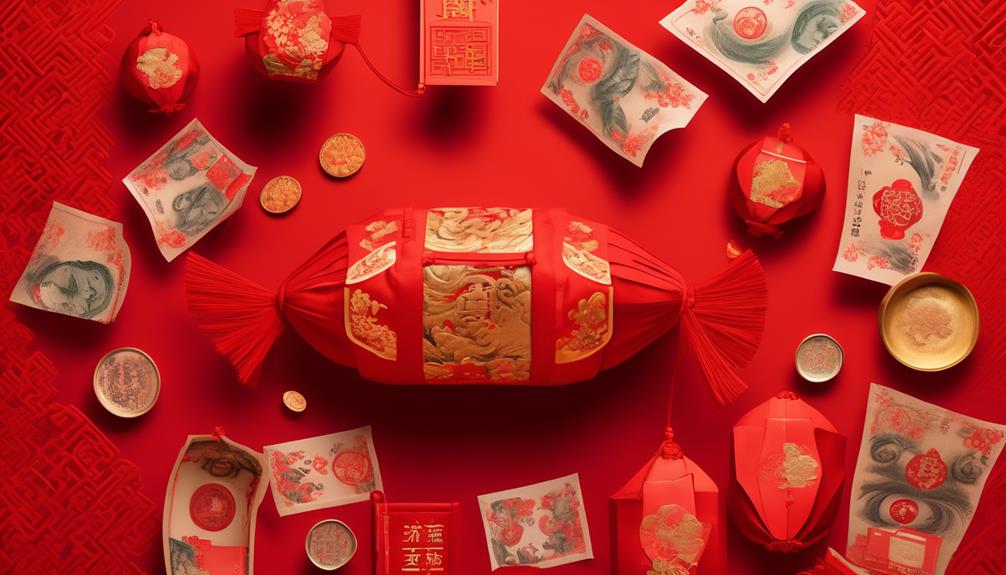
Traditionally, Chinese culture assigns specific amounts of money as lucky when it comes to red envelopes. These beliefs surrounding lucky amounts are deeply rooted in the significance of numbers in Chinese culture. Here are three traditional lucky amounts commonly used in red envelopes:
- 88: In Chinese culture, the number 8 is considered extremely lucky because its pronunciation sounds similar to the word for wealth or prosperity. Therefore, the amount of 88 yuan in a red envelope is often seen as a symbol of financial abundance.
- 168: Similar to the number 8, the number 6 is also associated with luck and prosperity. The combination of 1 and 6 in the amount 168 symbolizes continuous fortune and success. It's often given during special occasions like weddings or business ventures.
- 888: This amount is considered the ultimate lucky number in Chinese culture. The repetition of the number 8 three times signifies great fortune and blessings. It's believed that giving 888 yuan in a red envelope will bring endless luck and happiness to the recipient.
These traditional lucky amounts reflect the importance of numbers and their symbolic meanings in Chinese culture. By giving these specific amounts in red envelopes, people hope to share their wishes for wealth, prosperity, and good fortune with their loved ones.
Factors Influencing the Lucky Amount
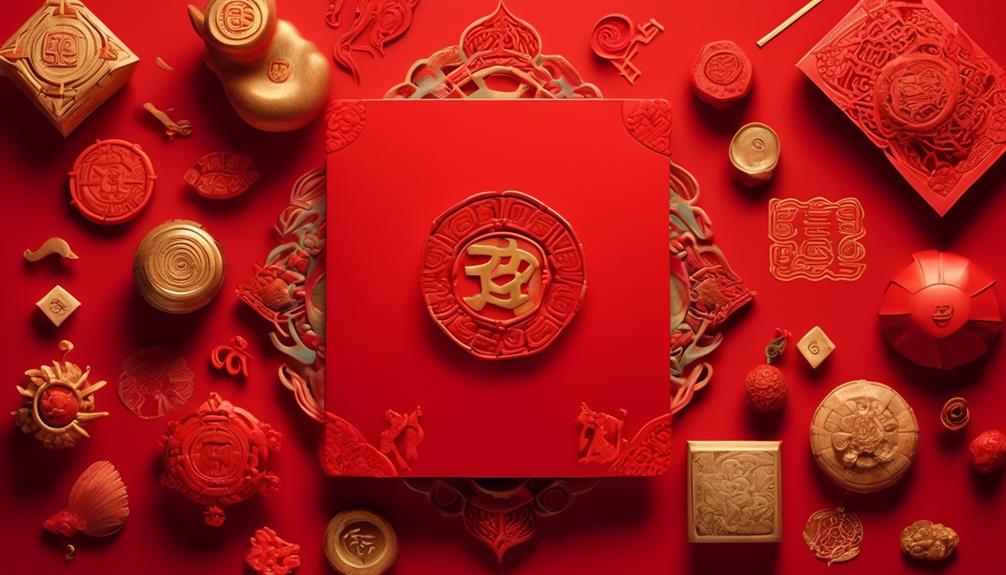
Factors that influence the selection of lucky amounts for red envelopes vary based on personal beliefs, cultural customs, and regional traditions. These factors play a significant role in determining the amount one should put in a red envelope to ensure good luck and prosperity for the recipient.
Personal beliefs are an important factor in deciding the lucky amount. Some individuals believe in numerology and consider certain numbers to be luckier than others. For example, the number 8 is considered very lucky in Chinese culture because it sounds similar to the word for 'wealth' or 'prosperity.' On the other hand, the number 4 is considered unlucky because it sounds similar to the word for 'death.'
Cultural influences also play a role in determining the lucky amount. Different cultures have their own beliefs and customs regarding lucky numbers. For example, in some Asian cultures, the number 9 is considered lucky because it's associated with longevity and eternity.
Regional traditions also contribute to the selection of lucky amounts. In some regions, there are specific customs related to red envelopes that dictate the amount one should give. For example, in certain areas of China, it's customary to give red envelopes with amounts that end in an even number, as odd numbers are associated with funerals.
Modern Adaptations and Variations

When it comes to modern adaptations and variations of red envelope giving, there are several factors that come into play.
One of the main influences is cultural, as different cultures have their own traditions and customs surrounding red envelopes.
Additionally, the symbolism of the lucky amount has evolved over time, with certain numbers believed to bring good fortune or prosperity.
Lastly, there are certain etiquette rules to follow when giving or receiving red envelopes, which are important to consider in today's society.
Cultural Influences on Red Envelope Giving
Throughout the years, the exchange of red envelopes has evolved and adapted to modern cultural influences, resulting in a variety of innovative and unique practices. Here are three key examples of how cultural traditions and historical significance have influenced red envelope giving:
- Digital Red Envelopes: With the rise of technology, people have started to send digital red envelopes through apps and social media platforms. This allows for instant sending and receiving, making it convenient for long-distance gifting.
- Personalized Red Envelopes: Many individuals now customize their red envelopes with personal messages, photos, or even their own artwork. This adds a personal touch to the gift and makes it more meaningful.
- Charity Red Envelopes: In recent years, there's been a growing trend of giving red envelopes to charitable causes. Instead of keeping the money for themselves, people donate it to organizations or individuals in need, embracing the spirit of giving.
These adaptations and variations showcase how red envelope giving has transformed to reflect the modern cultural landscape while still honoring its cultural traditions and historical significance.
Symbolism of Lucky Amounts
One notable aspect of modern adaptations and variations in red envelope giving is the symbolism attached to specific amounts of money. In many cultures, certain numbers are considered lucky and are believed to bring good fortune and prosperity.
For example, the number 8 is widely regarded as a symbol of wealth and abundance in Chinese culture. This belief stems from the pronunciation of the number 8 in Chinese, which sounds similar to the word for 'prosper.' As a result, it's common to see red envelopes containing amounts ending in 8, such as 88 or 888, being given during special occasions.
Similarly, the number 9 is often associated with longevity and is considered lucky in many Asian cultures.
On the other hand, the number 4 is considered unlucky as it sounds similar to the word for 'death' in Chinese and Japanese cultures.
Therefore, it's important to be mindful of these cultural beliefs when giving red envelopes.
Red Envelope Etiquette
As we explore the topic of Red Envelope Etiquette, we can observe how modern adaptations and variations have influenced the traditional practice of giving red envelopes. In today's fast-paced world, red envelope traditions have evolved to suit the changing needs and customs of people.
Here are three interesting ways in which red envelope giving customs have been modernized:
- Digital Red Envelopes: With the rise of technology, sending virtual red envelopes has become increasingly popular. People can now send money electronically through various apps and platforms, making it convenient and efficient.
- Personalized Red Envelopes: Many individuals now personalize their red envelopes by adding their own creative touches, such as custom designs or personal messages. This adds a thoughtful and unique touch to the traditional practice.
- Charity Red Envelopes: Some people have started a new tradition where instead of giving money to family and friends, they donate to a charity of their choice. This modern adaptation allows them to spread goodwill and make a positive impact in their community.
These modern adaptations and variations of red envelope traditions reflect the changing times and individual preferences, while still preserving the essence of this ancient custom.
Lucky Amounts for Different Occasions
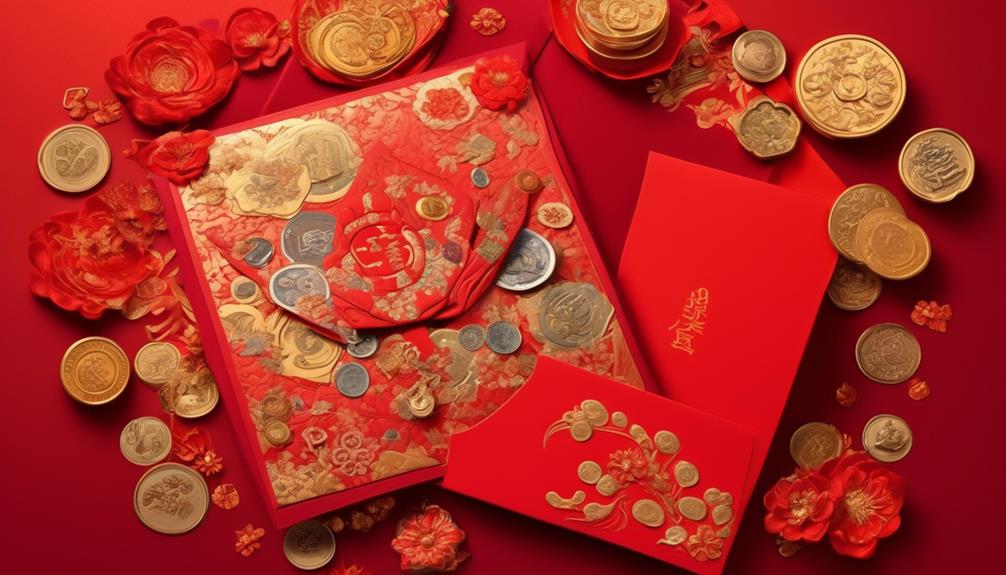
For different occasions, there are specific amounts considered to be lucky when given in a red envelope. When it comes to weddings, the lucky amount is usually given in even numbers. This is because odd numbers are associated with funerals and are considered unlucky. The most common lucky amount for weddings is $88, as the number 8 is believed to bring good fortune and prosperity in Chinese culture. In fact, the number 8 is considered so lucky that some couples even choose to set their wedding date on a day that includes the number 8.
When it comes to birthdays, lucky amounts can vary depending on the age of the person celebrating. For children, the lucky amount is often given in multiples of 9, as the number 9 is associated with longevity and is considered lucky. For example, $18 or $99 would be considered lucky amounts for a child's birthday. However, for adults, the lucky amount is often given in multiples of 8. Similar to weddings, the number 8 is believed to bring good luck and prosperity in Chinese culture. Therefore, amounts like $88 or $888 would be considered lucky for an adult's birthday.
Regional Differences in Lucky Amounts
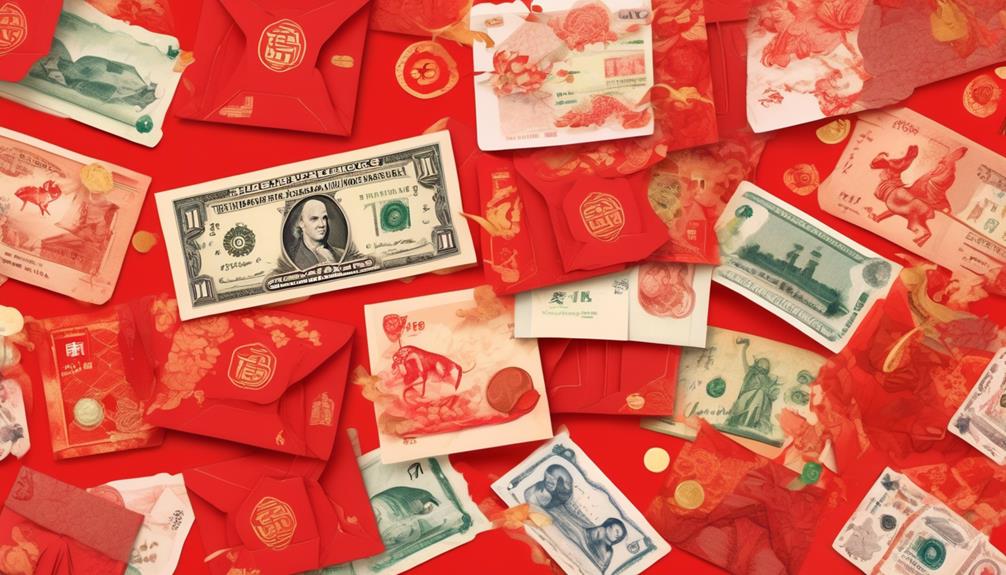
Regional variations exist in the lucky amounts given in red envelopes for different occasions. When it comes to red envelope giving, cultural customs and regional traditions play a significant role in determining the amount of money to be placed inside. Here are three examples of regional differences in lucky amounts:
- China: In China, the number 8 is considered extremely lucky because it sounds similar to the word for wealth. Therefore, it's common to give amounts such as 88, 888, or even 8888 yuan in red envelopes. On the other hand, the number 4 is considered unlucky as it sounds similar to the word for death, so it's best to avoid giving amounts with the number 4.
- Taiwan: In Taiwan, the number 6 is considered lucky because it sounds similar to the word for smooth progress. Therefore, it's common to give amounts such as 66 or 666 in red envelopes. Additionally, the number 9 is also considered lucky as it sounds similar to the word for longevity, so amounts like 99 or 999 are also popular choices.
- Hong Kong: In Hong Kong, the number 9 is considered lucky due to its association with longevity and eternity. It's common to give amounts like 99 or 999 in red envelopes. Additionally, the number 8 is also considered lucky, similar to the Chinese tradition, so amounts like 88 or 888 are also considered fortunate.
These regional differences highlight the importance of cultural customs and traditions in determining the lucky amounts given in red envelopes. Understanding these regional variations can help ensure that the recipient feels valued and respected according to their cultural beliefs.
Creative Ways to Present the Lucky Amount
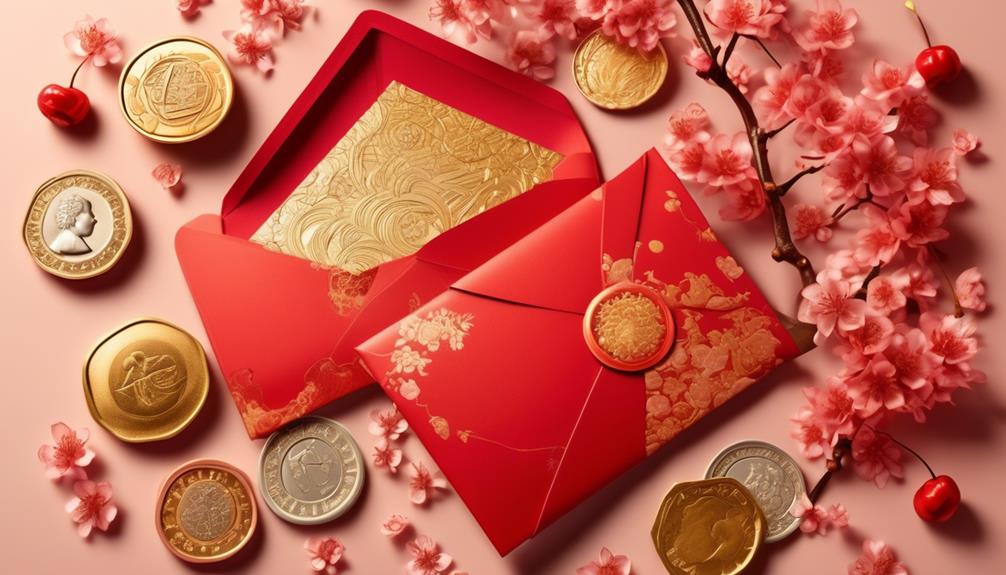
When it comes to presenting the lucky amount in a red envelope, there are countless creative ways to make it a memorable experience.
One idea is to wrap the envelope in a unique gift wrapping, such as a personalized photo collage or a small puzzle.
Another option is to surprise the recipient with a special delivery, like hiding the envelope within a bouquet of flowers or attaching it to a helium balloon.
These creative presentation ideas add an extra touch of excitement and anticipation to the lucky amount, making it a truly unforgettable gift.
Unique Gift Wrapping
One way to add an extra touch of excitement to the lucky amount in a red envelope is by creatively wrapping it in a unique and eye-catching manner. Here are three unique gift wrapping ideas that will make the red envelope stand out:
- Origami Surprise: Fold the red envelope into a beautiful origami shape, such as a flower or an animal. This not only creates an intriguing presentation but also showcases your creativity and effort.
- Puzzle Box: Create a puzzle box using a small gift box and decorate it with colorful paper or ribbons. Place the red envelope inside the puzzle box and challenge the recipient to solve it to reveal the lucky amount.
- Personalized Wrapper: Design a custom wrapper for the red envelope by printing or drawing the recipient's name, favorite symbols, or meaningful quotes. Personalizing the wrapper adds a thoughtful touch to the gift and shows that you put extra effort into making it unique.
Surprise Delivery Ideas
To add an element of surprise and excitement, there are countless creative ways to present the lucky amount in a red envelope.
One idea is to throw a surprise party for the recipient. Imagine their joy when they walk into a room filled with balloons, decorations, and their loved ones gathered to celebrate. As the party gets underway, a special moment can be created when the red envelope is presented.
Another idea is to incorporate themed gift ideas into the surprise delivery. For example, if the recipient loves traveling, the lucky amount could be hidden inside a miniature suitcase or a globe-shaped container. This not only adds an element of surprise but also shows that thought and effort went into the presentation of the gift.
The key is to tailor the surprise delivery to the recipient's interests and preferences, making it a truly memorable experience.
Etiquette for Giving and Receiving Red Envelopes

In the realm of gift-giving customs, understanding the proper etiquette for giving and receiving red envelopes holds great significance. Red envelope giving traditions are deeply rooted in Chinese culture, and they play a significant role in various celebrations, especially weddings.
Here are three essential etiquette guidelines to keep in mind:
- Timing is everything: It's customary to present red envelopes during important events such as weddings, Chinese New Year, birthdays, and other joyous occasions. Make sure to offer the red envelope at an appropriate time during the event, usually after giving your congratulations or well wishes.
- Presentation matters: When giving a red envelope, it's important to present it with both hands as a sign of respect. The envelope should be crisp, clean, and uncreased, symbolizing good luck and prosperity. Avoid opening the envelope in front of the recipient, as it may come across as impolite.
- Receiving with gratitude: When receiving a red envelope, it's customary to accept it with both hands. Express gratitude and appreciation for the gesture, as the red envelope symbolizes blessings and good fortune. Avoid opening the envelope in front of the giver, as it may seem rude or disrespectful.
Understanding the etiquette surrounding red envelope giving and receiving is essential in honoring Chinese traditions and showing respect to the culture. By following these guidelines, you can participate in these cherished customs with grace and appreciation.
Tips for Choosing the Perfect Lucky Amount
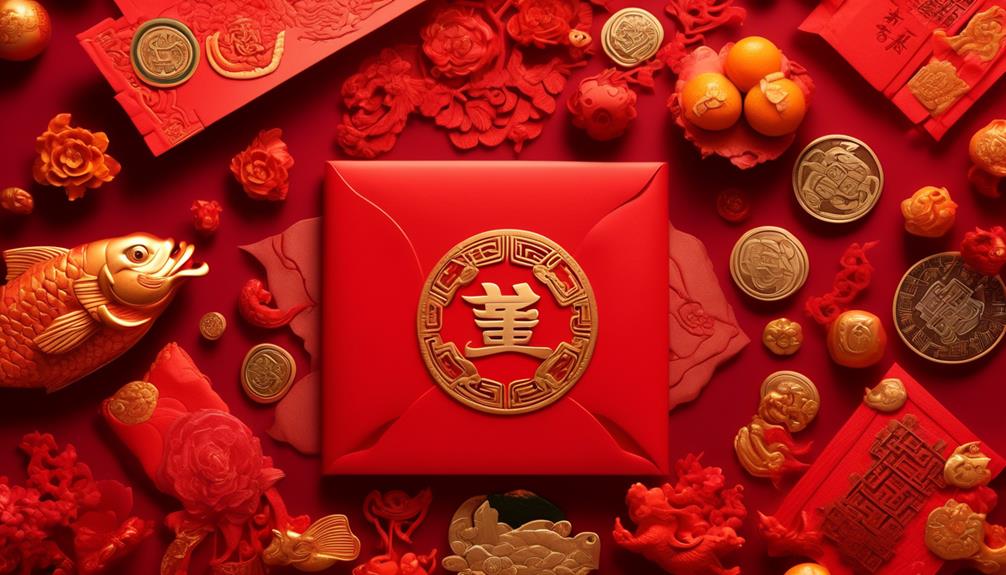
When selecting the perfect lucky amount for a red envelope, it is important to consider cultural customs and symbolism associated with numbers in Chinese traditions. In Chinese culture, certain numbers are believed to bring good luck, while others are seen as unlucky. Understanding numerology interpretations can help in choosing a meaningful amount to put in a red envelope.
To help you in your decision, here are some tips and creative presentation ideas for choosing the perfect lucky amount:
| Lucky Number | Numerology Interpretation |
|---|---|
| 8 | Represents wealth and prosperity. Considered the luckiest number in Chinese culture. |
| 6 | Symbolizes smoothness and happiness. It is associated with success and business in Chinese traditions. |
| 9 | Signifies eternity and longevity. It is considered an auspicious number that brings good fortune. |
When giving a red envelope, you can consider combining these lucky numbers to create a unique and meaningful amount. For example, you could choose an amount like 86, which combines the luck of wealth and smoothness. Additionally, you can present the red envelope in a creative way, such as placing it in a decorative envelope holder or attaching it to a small gift.
Frequently Asked Questions
How Did the Tradition of Giving Red Envelopes Originate?
The tradition of giving red envelopes has a rich history and fascinating origin. It dates back to ancient China, where red envelopes were used to ward off evil spirits and bring good luck.
Over time, this practice evolved into a way to share blessings and express gratitude during festive occasions, such as Chinese New Year.
The significance of red envelopes lies in the color red, symbolizing prosperity and happiness.
Understanding the origin and history of red envelopes adds depth and meaning to this cherished tradition.
What Is the Cultural Significance of Red Envelopes in Chinese Culture?
In Chinese culture, red envelopes hold a significant cultural symbolism and are often given during special occasions. They're like tiny treasures, filled with good wishes and blessings.
The act of giving red envelopes follows a strict gift-giving etiquette. It's customary to put an even amount of money in the envelope, as odd numbers are associated with funerals. The amount given should be generous and reflect the giver's relationship and social status, while also symbolizing good luck and prosperity for the recipient.
What Are Some Beliefs and Superstitions Behind Choosing the Lucky Amount for a Red Envelope?
Beliefs and superstitions play a significant role in determining the lucky amount for a red envelope. The symbolism behind the chosen amount is deeply rooted in Chinese culture.
We believe that odd numbers are auspicious and bring good luck, while even numbers are seen as unlucky. The number 8 is particularly favored, as it sounds similar to the word for 'wealth' in Chinese. Additionally, avoiding the number 4 is common, as it's associated with death.
These beliefs guide our decisions when choosing the lucky amount for a red envelope.
Are There Traditional Lucky Amounts in Chinese Culture That Are Commonly Used in Red Envelopes?
In Chinese culture, it's common practice to put a traditional amount of money in red envelopes. These amounts vary depending on the occasion and the relationship between the giver and the recipient.
The traditional amounts are believed to bring good luck and blessings to the recipient. It's important to consider cultural customs and traditions when giving red envelopes, as they hold significant meaning and symbolize good fortune and prosperity.
What Factors Should Be Considered When Determining the Lucky Amount for a Red Envelope?
When determining the lucky amount for a red envelope, several factors should be considered.
Cultural significance plays a crucial role in deciding the amount. Understanding the traditional beliefs and customs associated with red envelopes is essential.
Additionally, personal relationships and the occasion at hand should be taken into account. The amount should reflect respect and good fortune, making it a meaningful gesture.
What Does the Lucky Amount in a Red Envelope Symbolize?
The lucky amount in a red envelope symbolizes good fortune and prosperity for the recipient. These envelopes are commonly filled with money or items for Chinese New Year and given as gifts during the holiday to bring luck and blessings for the coming year.
Conclusion
In conclusion, the lucky amount to put in a red envelope varies depending on cultural beliefs and personal preferences.
While there are traditional lucky amounts in Chinese culture, factors such as age, relationship, and regional differences also play a role.
It's important to consider these factors when deciding on the perfect amount to give.
Although some may argue that the significance of the lucky amount is purely superstitious, it's undeniable that red envelopes hold cultural and symbolic value, making them a cherished tradition in many communities.
- About the Author
- Latest Posts
Introducing Ron, the home decor aficionado at ByRetreat, whose passion for creating beautiful and inviting spaces is at the heart of his work. With his deep knowledge of home decor and his innate sense of style, Ron brings a wealth of expertise and a keen eye for detail to the ByRetreat team.
Ron’s love for home decor goes beyond aesthetics; he understands that our surroundings play a significant role in our overall well-being and productivity. With this in mind, Ron is dedicated to transforming remote workspaces into havens of comfort, functionality, and beauty.
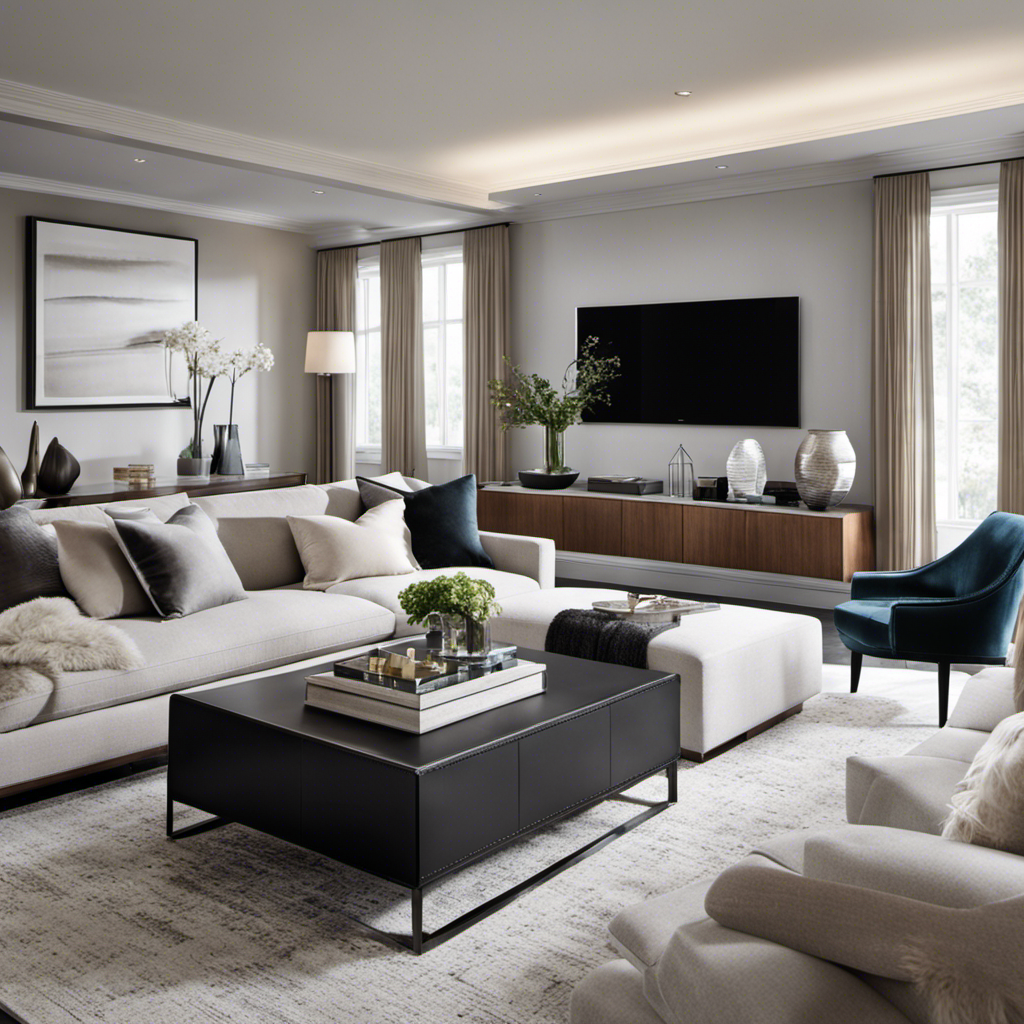
Picture entering a modern residence, where clean lines and vibrant colors intertwine harmoniously like a symphony.
In this article, we will explore the world of contemporary home decor and uncover its key characteristics, elements, and tips for incorporating it into your space.
From the choice of materials to the furniture and accessories, you’ll discover the secrets behind creating a modern and stylish sanctuary that reflects your unique taste and personality.
Get ready to infuse your home with a touch of contemporary elegance.
Key Takeaways
- Contemporary home decor is characterized by sleek lines, minimalism, and a focus on functionality.
- It incorporates technology and smart home features, as well as an emphasis on sustainability and the use of eco-friendly materials.
- Neutral color palettes and sleek materials create a calm and versatile backdrop for adding pops of color.
- Furniture and accessories in contemporary home decor feature clean lines and minimalist designs.
Characteristics of Contemporary Home Decor
You’ll love the sleek lines and minimalist aesthetic of contemporary home decor.
Contemporary design is heavily influenced by technology, with smart home features seamlessly integrated into the overall aesthetic. From automated lighting systems that adjust based on natural light levels to voice-controlled appliances, technology has made a significant impact on how we design and experience our homes.
Sustainability is also a key element in contemporary home decor. With a growing awareness of environmental issues, many homeowners are opting for eco-friendly materials and energy-efficient solutions. Recycled materials, low VOC paints, and energy-saving appliances are just a few examples of how sustainability is incorporated into contemporary design.
Transitioning into the next section, let’s explore the key elements that define contemporary home decor.
Key Elements of Contemporary Home Decor
To achieve a modern look in your living space, incorporate clean lines, minimalistic furniture, and neutral color palettes.
Clean lines: Contemporary design principles focus on simplicity and clarity. Straight and sleek lines create a sense of order and sophistication in your home.
Minimalistic furniture: Embrace a minimalist aesthetic by choosing furniture pieces that are sleek and functional. Avoid excessive ornamentation and opt for pieces with clean, simple shapes that prioritize functionality.
Neutral color palettes: Contemporary design often uses neutral colors such as white, gray, and beige as a backdrop. These shades create a calm and serene atmosphere, allowing other design elements to stand out.
Colors and Materials in Contemporary Home Decor
When choosing colors and materials for your modern living space, opt for neutral shades and sleek materials to create a clean and sophisticated atmosphere. Contemporary home decor often embraces a minimalistic approach, favoring simplicity and functionality.
Neutral color palettes, such as whites, grays, and beiges, serve as the foundation for this style, allowing for a calm and serene ambiance. These colors also provide a versatile backdrop for adding pops of color through accessories and artwork.
In terms of materials, sustainable options are gaining popularity in contemporary design. Bamboo, reclaimed wood, and recycled materials not only contribute to a more eco-friendly home, but they also add texture and visual interest to the space.
By incorporating these elements into your interior, you can create a modern and environmentally-conscious living environment.
Now let’s explore how furniture and accessories play a role in contemporary home decor.
Furniture and Accessories in Contemporary Home Decor
Choose furniture and accessories that feature clean lines and sleek designs to enhance the modern aesthetic of your living space. In contemporary home decor, furniture trends lean towards minimalism in design, focusing on simplicity and functionality. Here are three key pieces that can elevate your space to the next level:
-
A streamlined sofa: Opt for a sofa with clean, straight lines and a low-profile silhouette. Look for one in a neutral color, such as gray or beige, to maintain a minimalist vibe.
-
Minimalist lighting fixtures: Choose sleek and simple lighting fixtures that blend seamlessly with the overall design scheme. Pendant lights with geometric shapes or floor lamps with slender frames are great options.
-
Minimalistic coffee table: Select a coffee table with a minimalist design, featuring clean lines and a minimalist color palette. Look for one made of materials like glass, metal, or wood to add a touch of elegance to your living room.
Is Modern Boho Decor Considered a Subset of Contemporary Home Decor?
Yes, modern boho decor style is often considered a subset of contemporary home decor. This trendy design aesthetic combines elements of bohemian and modern decor, resulting in a stylish, eclectic, and laid-back vibe. With its mix of bold colors, textures, and natural materials, modern boho decor adds a fresh and unique touch to contemporary homes.
Tips for Incorporating Contemporary Home Decor in Your Space
To achieve a modern and stylish atmosphere in your living space, focus on incorporating clean lines, sleek designs, and minimalistic elements.
When it comes to artwork selection, opt for pieces that are contemporary and abstract, as they can add a touch of sophistication and intrigue to your decor. Look for artwork that features bold colors, geometric shapes, and unconventional compositions.
Lighting fixtures play a crucial role in creating a contemporary ambiance. Choose fixtures that have clean and simple designs, such as pendant lights with metallic finishes or floor lamps with sleek and minimalistic shapes. Pay attention to the type of light emitted as well, as soft and warm lighting can create a cozy and inviting atmosphere.
Frequently Asked Questions
What Is the History and Origins of Contemporary Home Decor?
Contemporary home decor has a rich history and fascinating origins. It has evolved over time, influenced by various design movements and cultural shifts. Let’s delve into the captivating story behind this popular interior style.
Are There Any Specific Cultural Influences on Contemporary Home Decor?
Contemporary home decor draws on various cultural influences, blending traditional elements with modern design. You’ll find touches of Asian minimalism, Scandinavian simplicity, and African patterns, creating a unique and eclectic style.
What Are Some Common Misconceptions About Contemporary Home Decor?
Common misconceptions about contemporary home decor include thinking it’s all about minimalism or cold aesthetics. In reality, it’s about blending modern and traditional elements, creating a warm and inviting space. Popular trends include mixing textures, bold colors, and statement pieces.
Can Contemporary Home Decor Be Combined With Other Design Styles?
Yes, you can combine contemporary home decor with other design styles. By blending contemporary elements with traditional pieces, or mixing contemporary decor with rustic design, you can create a unique and eclectic look for your home.
How Does Contemporary Home Decor Differ From Modern or Minimalist Design?
Contemporary home decor distinguishes itself from modern or minimalist design through its unique blend of traditional elements and incorporation of modern gadgets. Embrace the differences and let technology enhance the aesthetic appeal of your living space.
Conclusion
In the symphony of design, contemporary home decor dances to the beat of modernity. With clean lines and minimalist aesthetics, it paints a canvas of simplicity and sophistication. Like a skilled conductor, it harmonizes colors and materials, blending them seamlessly.
Furniture and accessories take center stage, showcasing sleek and functional designs. Embrace the rhythm of contemporary home decor and transform your space into a masterpiece of elegance and style.
Let the allegory of modernity guide you on this artistic journey.
- About the Author
- Latest Posts
Introducing Charles, the Editor in Chief at ByRetreat, whose passion for interior design and editorial excellence elevates every remote workspace to new heights. With his keen eye for detail, impeccable taste, and expertise in design, Charles brings a wealth of knowledge and creativity to the ByRetreat team.
As the Editor in Chief of a renowned lifestyle blog, Charles has honed his skills in curating captivating content and staying up-to-date with the latest trends in interior design. His deep understanding of aesthetics and the power of storytelling through design enables him to create remote workspaces that are not only visually stunning but also rich in personality and meaning.
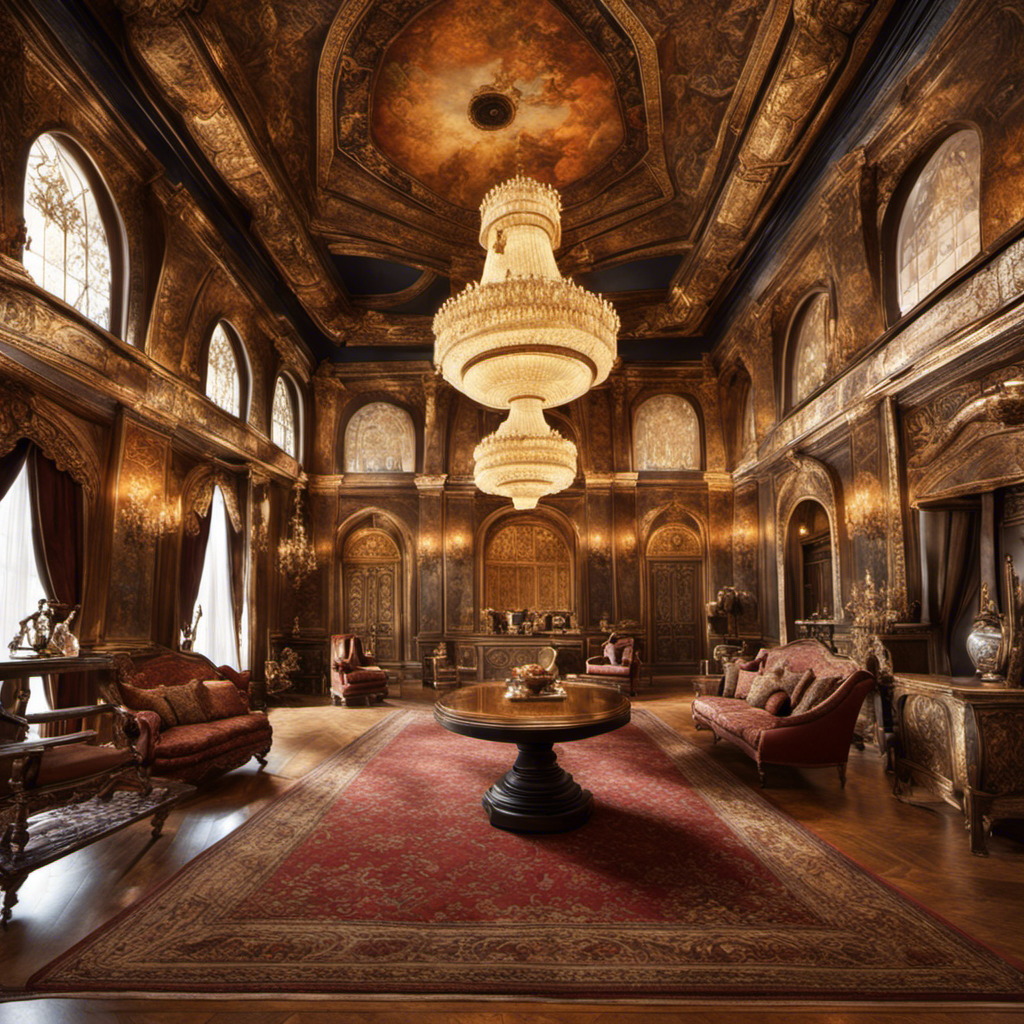
You’re in luck, buddy! Skyhold Decor is right around the corner, ready to turn your fortress into a stunning sanctuary. Come into a realm where merchants are eagerly waiting for you, providing a delightful selection of decorative treasures.
Crafters and gatherers will find their skills rewarded, as rare drops from defeated enemies can also be repurposed into stunning adornments. Quests will lead you to hidden gems, and don’t forget about the DLC and expansion packs, bursting with even more possibilities.
Your Skyhold will be the envy of all.
Key Takeaways
- Merchants in Skyhold, such as Alara’s Emporium and Banner Forge, offer unique handcrafted furniture pieces and customizable banners for displaying heraldry.
- Crafting and gathering resources in diverse environments, engaging with local wildlife, and mastering gathering professions like mining, herbalism, and skinning can enhance gameplay experience and unlock furniture customization possibilities.
- Defeating enemies can yield rare drops, and employing effective farming strategies or trading valuable resources with other players can increase the chances of obtaining rare drops.
- Quest rewards should be checked carefully for valuable items and resources, as some quests offer rare crafting materials, unique weapons, and gear that can greatly enhance the gameplay experience.
Merchants in Skyhold
You can find various merchants in Skyhold where you can purchase different types of decor for your keep.
One of the most popular merchants is Alara’s Emporium, located in the heart of the market square. They specialize in unique furniture pieces that are handcrafted by skilled artisans from all over the realm. From ornate dining tables to exquisite bedroom sets, they’ve everything you need to make your keep truly one-of-a-kind.
Another merchant to check out is Banner Forge, situated near the training grounds. They offer a wide selection of customizable banners, allowing you to proudly display your heraldry and unite your followers under a common symbol.
Whether you’re looking for elegant furniture or personalized banners, the merchants of Skyhold have you covered.
Crafting and Gathering
To find crafting materials and gather resources, check out the various regions and zones in the game. There are countless opportunities for resource farming that will enhance your gameplay experience and unlock new possibilities for furniture customization.
Here are some tips to help you make the most of your crafting and gathering adventures:
-
Explore diverse environments: Venture into lush forests, treacherous mountains, and mysterious caves. Each region offers a unique array of resources waiting to be discovered.
-
Engage with the local wildlife: Animals can be a valuable source of materials. Hunt beasts for their hides, bones, and other valuable components.
-
Master gathering professions: Develop skills in gathering professions such as mining, herbalism, and skinning. By honing these abilities, you’ll be able to collect rare resources and create exquisite furniture pieces.
By embracing the art of resource farming and furniture customization, you’ll create a world that reflects your creative vision and showcases your unique style.
Rare Drops From Enemies
Defeating enemies in combat can sometimes yield rare drops that are highly sought after by players. These valuable items can provide a significant advantage or fetch a high price in the trading market.
To increase your chances of obtaining these rare drops, it’s essential to employ effective farming strategies. This entails identifying the enemies that are known to drop the desired items and repeatedly engaging them in combat. By focusing your efforts on these specific enemies, you maximize your chances of obtaining the rare drops you seek.
Once you’ve acquired these coveted items, trading opportunities abound. Other players may be in search of these rare drops and are willing to trade valuable resources or currency in exchange for them. By leveraging your knowledge of the market and the rarity of these items, you can negotiate favorable trades that enhance your own progression in the game.
Quest Rewards
When completing quests, be sure to check the rewards carefully for valuable items and resources. Quest rewards can often be overlooked, but they can hold valuable treasures that can greatly enhance your gameplay experience.
Here are some alternative methods and hidden treasures that you should be on the lookout for:
-
Rare Crafting Materials – Some quests offer rare crafting materials that can be used to create powerful weapons and armor. These materials are often hard to come by through other means, making them highly sought after by players.
-
Unique Weapons and Gear – Certain quests can reward you with unique weapons and gear that can’t be obtained through regular gameplay. These items often come with special abilities or stat bonuses, giving you an edge in battles.
Do they sell Skyhold Decor at Floor and Decor Arlington now?
Are you curious about the floor and decor Arlington history? Do they sell Skyhold decor at Floor and Decor Arlington now? It’s worth exploring the history of this beloved store while checking out their latest offerings. Discover the perfect Skyhold decor to elevate your space at Floor and Decor Arlington.
DLC and Expansion Packs
Make sure you check out the new DLC and expansion packs available, as they offer exciting new content and features that can enhance your gameplay experience.
One of the highlights of these updates is the addition of additional Skyhold customization options. Now, you’ve more choices when it comes to decorating your stronghold and making it truly your own. From new furniture pieces to unique wall paintings, the options are vast and diverse.
But here’s the best part: you can unlock special Skyhold decorations through gameplay achievements. By completing certain quests, defeating challenging enemies, or reaching specific milestones, you can earn these exclusive decorations that will make your Skyhold stand out from the rest.
Frequently Asked Questions
Can I Get Skyhold Decor From Completing Specific Achievements or Challenges?
Yes, you can obtain Skyhold decor by completing quests or missions. Additionally, you can purchase Skyhold decor from in-game vendors or shops. These options allow you to customize and enhance your Skyhold experience.
Are There Any Special Events or Limited-Time Promotions Where I Can Obtain Unique Skyhold Decor?
To obtain unique Skyhold decor, keep an eye out for special events or limited-time promotions. These can offer popular items that allow you to customize your Skyhold decor according to your personal style.
Can I Trade or Sell Skyhold Decor Items With Other Players?
Yes, you can trade or sell skyhold decor items with other players, but there are limitations. Some rare decor items hold higher value in the player market, making them valuable commodities worth considering in your trades.
Are There Any Hidden or Secret Locations in Skyhold Where I Can Find Rare and Exclusive Decor Items?
Hidden in the depths of Skyhold lie secret locations brimming with rare and exclusive decor items. Uncover these hidden gems to adorn your stronghold with a touch of mystique and elegance.
Can I Obtain Skyhold Decor by Participating in Player-Versus-Player Activities or Tournaments?
You can earn Skyhold decor by participating in player-versus-player activities or tournaments. This is a great way to obtain unique and rare items without having to rely on achievements or challenges.
Conclusion
As you gaze upon the magnificent decor adorning the walls of Skyhold, you can’t help but feel a sense of accomplishment.
Each piece tells a story, a symbol of your journey and triumphs. Whether it be from the local merchants, the fruits of your own crafting and gathering, rare drops from defeated foes, or even as rewards for completing quests, every item holds a deeper meaning.
They’re the embodiment of your growth, your strength, and the mark you’ve left on this world.
- About the Author
- Latest Posts
Meet Bethia, the visionary designer at ByRetreat who brings a touch of magic to every remote workspace she creates. With a boundless imagination and an eye for beauty, Bethia is passionate about transforming ordinary spaces into extraordinary havens of creativity and comfort.
Bethia possesses a unique talent for envisioning the perfect combination of furniture, colors, and textures that harmonize seamlessly in a room. She understands that selecting furniture goes beyond mere functionality; it’s about curating pieces that evoke a sense of style and sophistication while enhancing the overall ambiance.
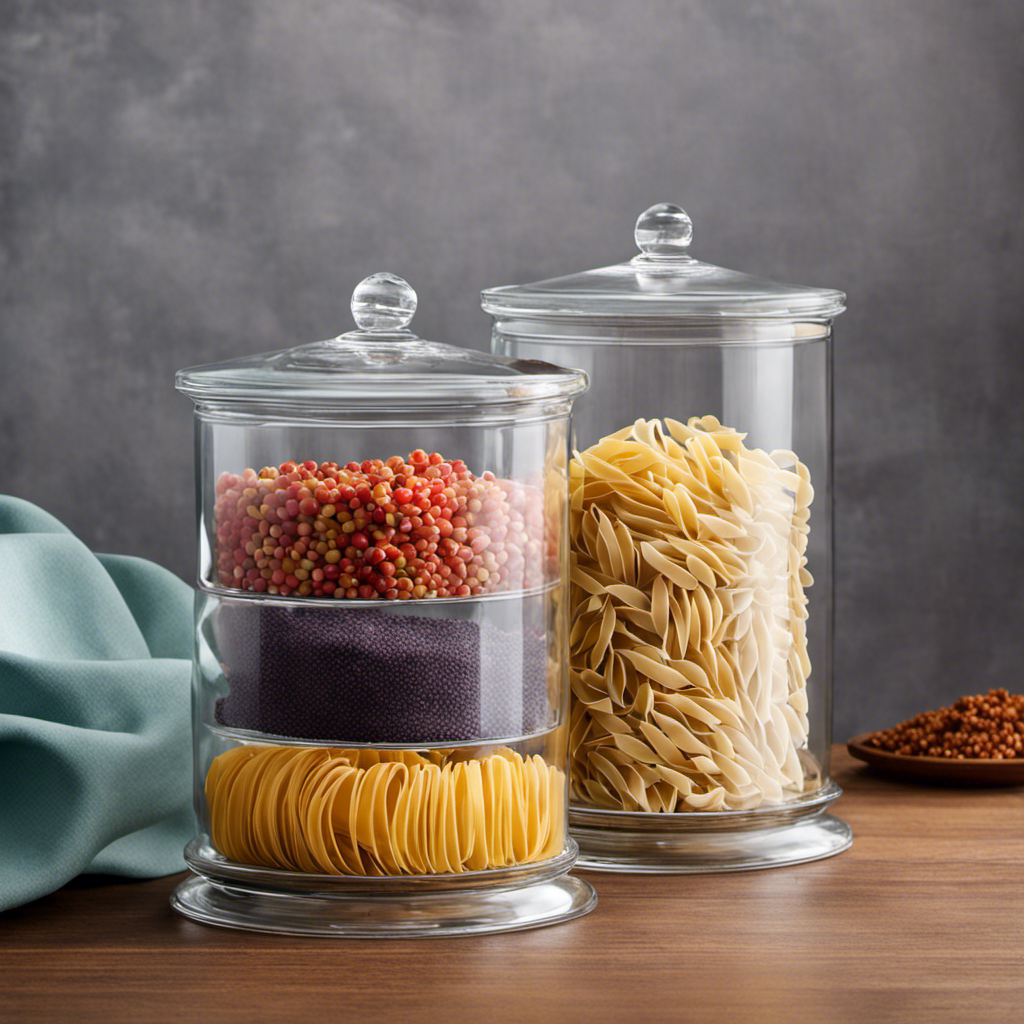
Hey everyone! Have you ever faced difficulties in enhancing your kitchen decor? Don’t worry, because I have some great ideas on what to put in those clear canisters. Believe me, it will make a big difference.
From fresh herbs and spices to colorful dry pasta, and even assorted baking supplies, the options are endless.
Oh, and let’s not forget about dried fruits and nuts, or the heavenly aroma of coffee beans and tea leaves.
Get ready to transform your kitchen into a stylish and functional space!
Key Takeaways
- Fresh herbs and spices bring freshness and vitality to the kitchen
- Colorful dry pasta adds pop of color and personality to the kitchen
- Organized baking supplies save time and add elegance to the kitchen
- Coffee beans and tea leaves in clear canisters add elegance and aroma to the kitchen
Fresh Herbs and Spices
I love filling clear canisters with fresh herbs and spices to add a burst of flavor and color to my kitchen decor.
One of my favorite ways to incorporate herbs into my kitchen is by creating an indoor herb garden. It not only adds a touch of greenery but also provides me with a convenient source of fresh herbs for cooking.
I enjoy the process of selecting different herbs like basil, rosemary, and thyme, and nurturing them as they grow. Not only do they enhance the aroma and taste of my dishes, but they also bring a sense of freshness and vitality to my kitchen.
Additionally, I enjoy experimenting with DIY spice blends. By combining different spices like cumin, paprika, and garlic powder, I can create unique flavors that perfectly complement my culinary creations. Having these spice blends readily available in clear canisters not only adds a decorative touch to my kitchen but also makes it easy for me to access and use them while cooking.
Colorful Dry Pasta
My favorite way to spruce up my kitchen is by using colorful dry pasta as a vibrant and eye-catching decorative element in my home. Not only does it add a pop of color, but it also brings a touch of whimsy and personality to my kitchen decor.
Here are some ideas to inspire you:
-
Different Shaped Pasta: From bowties to spirals, there are so many unique and interesting pasta shapes available. Mix and match them to create a visually appealing display in your clear canisters.
-
Vintage Kitchen Utensils: Pair your colorful dry pasta with vintage kitchen utensils to create a charming and nostalgic vibe. Hang old whisks, spatulas, and ladles on the wall or display them in a jar alongside the pasta.
-
Layered Pasta: Create layers of different colored pasta in your canisters for a stunning visual effect. This is a simple yet effective way to add depth and dimension to your kitchen decor.
Assorted Baking Supplies
One way to organize my assorted baking supplies is by using labeled containers to easily identify and access the ingredients and tools I need.
For my decorative sprinkles, I’ve a clear glass jar that showcases the vibrant colors and textures. It adds a pop of excitement to my kitchen decor, while also keeping my sprinkles fresh and easily accessible.
Another container I use is a small plastic bin for my cookie cutters. I label it ‘Cookie Cutters’ and place it on a shelf within reach. This way, whenever I’m in the mood for baking cookies, I can quickly find the perfect shape without rummaging through drawers.
Organizing my baking supplies in this way not only saves me time but also adds a touch of elegance to my kitchen.
Dried Fruits and Nuts
To keep my dried fruits and nuts fresh, I store them in airtight containers. Not only do dried fruits and nuts add a burst of flavor and texture to any dish, but they also come with numerous health benefits.
Here are some reasons why you should incorporate them into your diet:
- Boost of nutrients: Dried fruits and nuts are packed with essential vitamins, minerals, and antioxidants that promote overall well-being.
- Energy-packed snacks: Whether you’re on-the-go or need a pick-me-up during the day, dried fruits and nuts provide a quick and nutritious energy boost.
- Versatile ingredients: Get creative in the kitchen by using dried fruits and nuts in a variety of recipes, from salads and baked goods to savory dishes like stir-fries and pilafs.
Coffee Beans and Tea Leaves
I love the aroma of freshly ground coffee beans and the soothing taste of steeped tea leaves. There’s something magical about starting the day with a cup of freshly brewed coffee or a fragrant cup of tea.
When it comes to kitchen decor, clear canisters filled with coffee beans and loose leaf tea are a perfect choice. Not only do they add a touch of elegance to the kitchen, but they also serve a practical purpose. The rich, earthy scent of coffee beans fills the air, creating a warm and inviting atmosphere.
The canisters can be arranged on a countertop or displayed on a shelf, allowing you to showcase your favorite blends. To enhance the visual appeal, you can also add a few sprigs of aromatic herbs like lavender or mint to the canisters. This not only adds a pop of color but also infuses a subtle herbal fragrance into the air.
Frequently Asked Questions
How Can I Properly Store Fresh Herbs and Spices to Maintain Their Freshness and Flavor?
To properly store herbs and spices for freshness, I recommend using clear canisters. This allows you to easily see and access your collection. Ensure they are tightly sealed to maintain flavor and store in a cool, dry place away from sunlight.
What Are Some Creative Ways to Display Colorful Dry Pasta in Clear Canisters?
I love finding creative ways to display colorful dry pasta in clear canisters. It’s a great way to add a pop of color to my kitchen decor. I also enjoy showcasing fresh flowers and colorful candy for a fun and vibrant look.
How Should I Organize and Store Assorted Baking Supplies in Clear Canisters for Easy Access?
I love using clear canisters to organize and store my assorted baking supplies. It’s a great way to keep everything easily accessible. I also have some ideas for organizing small kitchen appliances and tips for storing bulk grains and flours.
Can I Store Dried Fruits and Nuts Together in the Same Clear Canister or Should They Be Stored Separately?
Storing dried fruits and nuts together in a clear canister can be convenient, but it may affect their flavors and textures. Separating them ensures freshness and prevents cross-contamination.
What Are Some Tips for Selecting and Storing Coffee Beans and Tea Leaves in Clear Canisters to Preserve Their Flavor and Aroma?
When it comes to selecting canister sizes for coffee beans and tea leaves, it’s important to consider the quantity you typically use. To preserve their flavor and aroma, clean and maintain clear canisters regularly.
Can Clear Canisters Be Used to Display Christmas Decorations in the Kitchen?
Yes, clear canisters can beautifully showcase Christmas decorations for kitchen. Fill them with festive items like colorful cookie cutters, candy canes, mini ornaments, or cinnamon sticks. The transparent containers allow you to create a visually appealing holiday display while keeping your kitchen organized and festive.
Conclusion
In conclusion, filling clear canisters with various ingredients not only adds a decorative touch to your kitchen but also serves a practical purpose.
From fragrant herbs and spices to vibrant pasta and versatile baking supplies, the options are endless.
Don’t forget to include dried fruits and nuts for a healthy snack option, and coffee beans or tea leaves for a delightful caffeine fix.
Remember, the world is your oyster when it comes to kitchen decor, so let your creativity run wild!
- About the Author
- Latest Posts
Meet Bethia, the visionary designer at ByRetreat who brings a touch of magic to every remote workspace she creates. With a boundless imagination and an eye for beauty, Bethia is passionate about transforming ordinary spaces into extraordinary havens of creativity and comfort.
Bethia possesses a unique talent for envisioning the perfect combination of furniture, colors, and textures that harmonize seamlessly in a room. She understands that selecting furniture goes beyond mere functionality; it’s about curating pieces that evoke a sense of style and sophistication while enhancing the overall ambiance.
-

 Decor2 weeks ago
Decor2 weeks agoMaximalist Decor Explained: Embrace More Style
-

 Vetted2 weeks ago
Vetted2 weeks ago15 Best Foot Massagers for Neuropathy to Soothe Your Feet and Relieve Discomfort
-
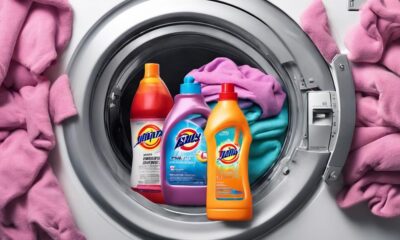
 Vetted3 weeks ago
Vetted3 weeks ago15 Best Sports Laundry Detergents for Keeping Your Activewear Fresh and Clean
-

 Vetted3 weeks ago
Vetted3 weeks ago15 Best Tall Toilets for Seniors That Combine Comfort and Safety
-
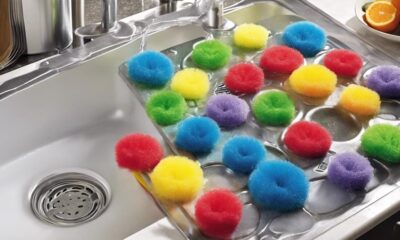
 Vetted4 weeks ago
Vetted4 weeks ago15 Best Dish Scrubbers to Keep Your Kitchen Sparkling Clean
-
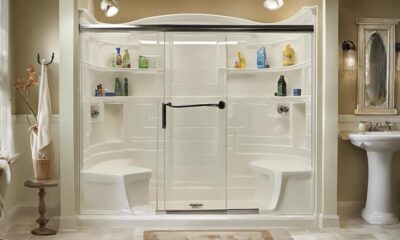
 Vetted3 days ago
Vetted3 days ago15 Best Cleaners for Fiberglass Showers to Keep Your Bathroom Sparkling Clean
-
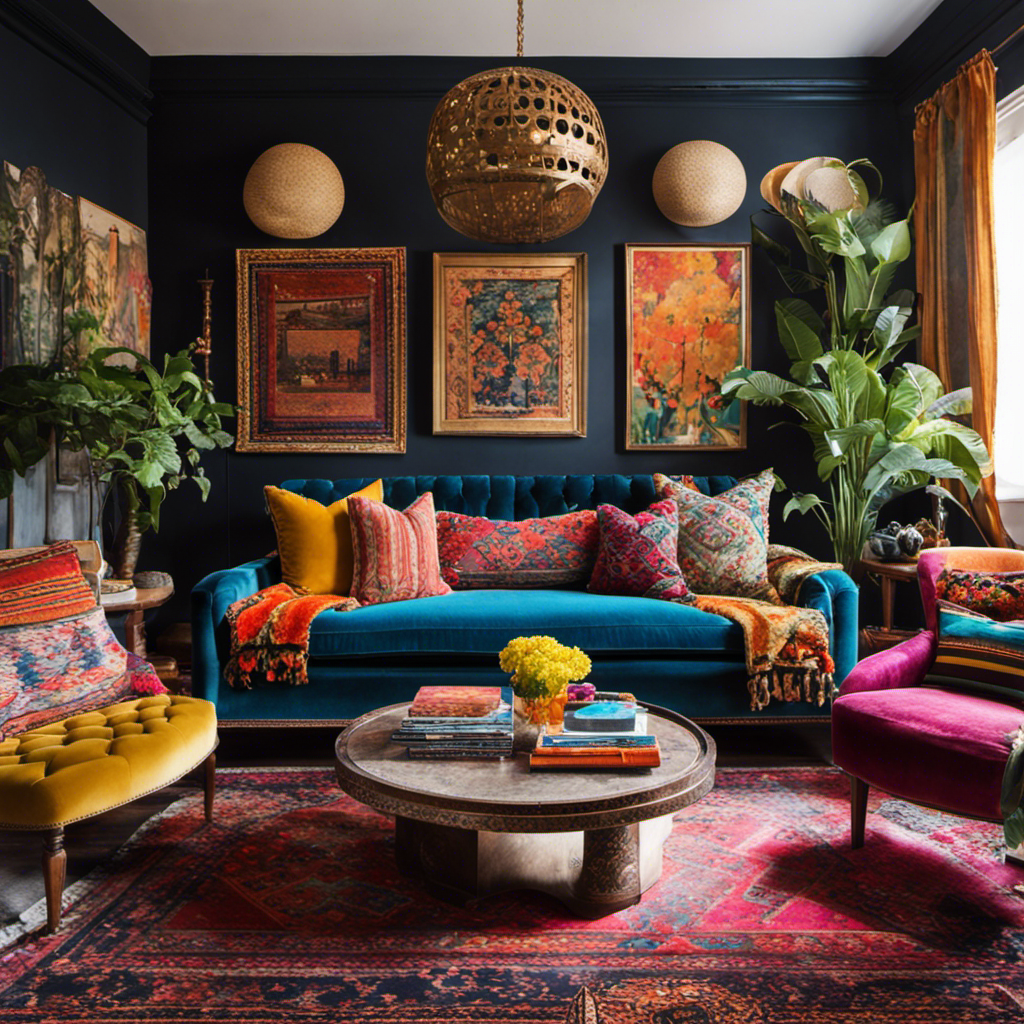
 Decor4 weeks ago
Decor4 weeks agoWhat Is Eclectic Home Decor
-
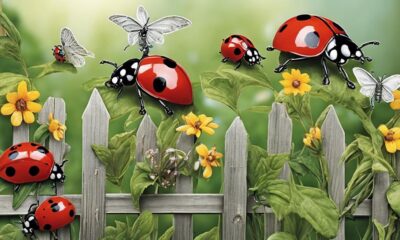
 Vetted1 week ago
Vetted1 week ago15 Best Organic Pest Control Solutions for a Naturally Pest-Free Home



























